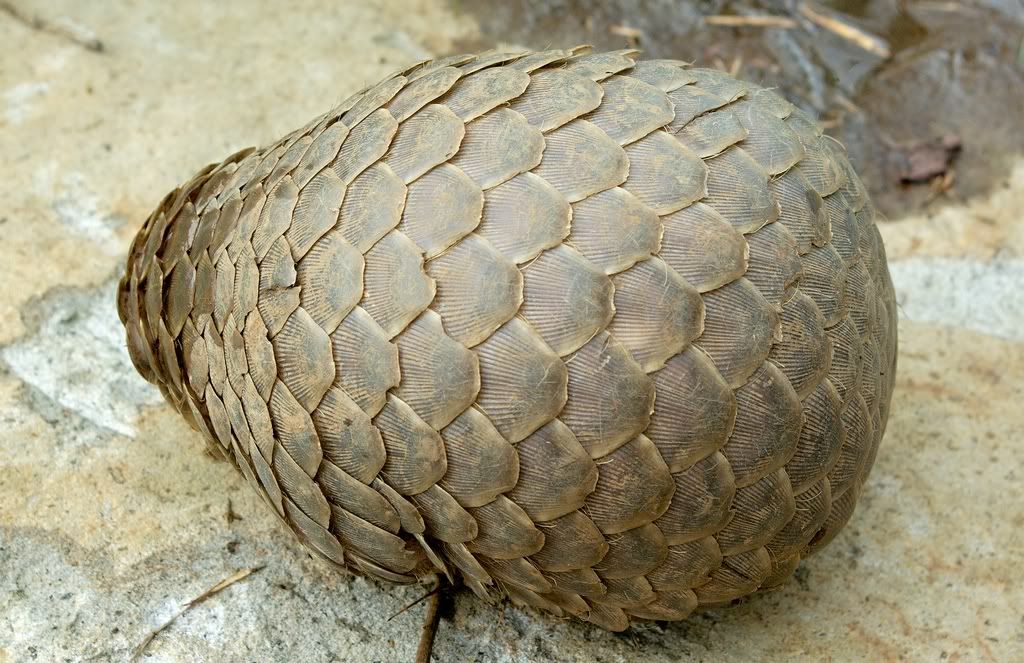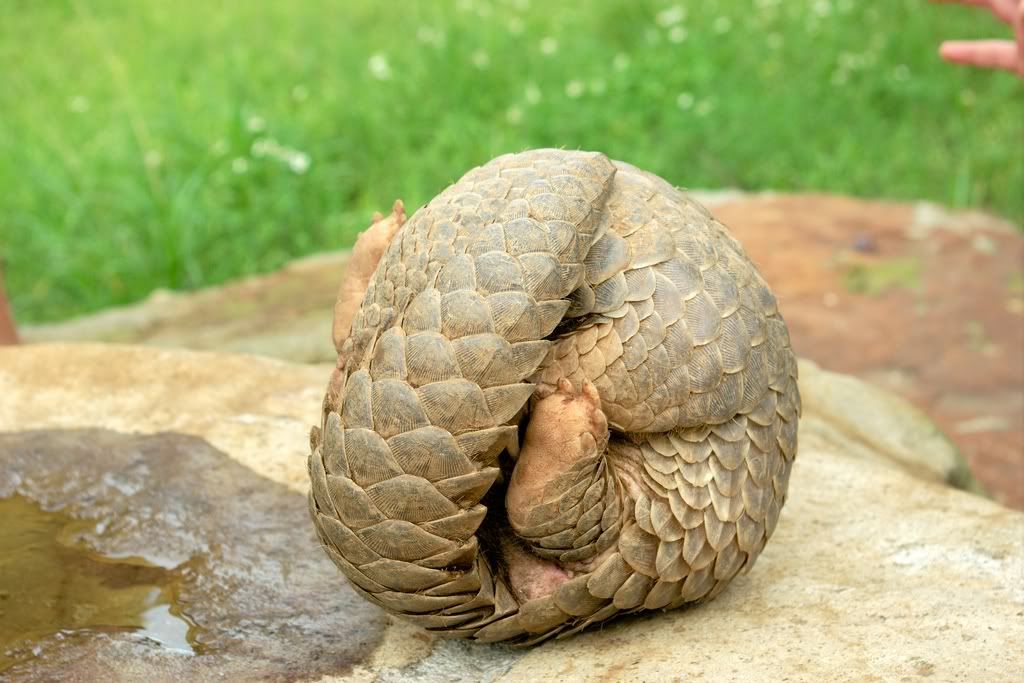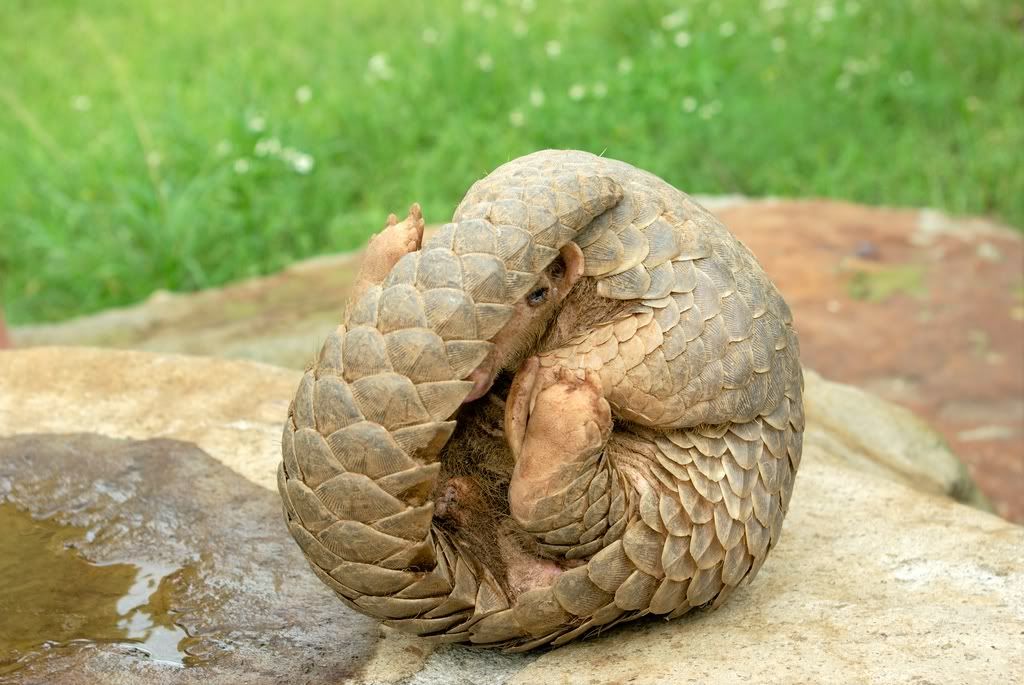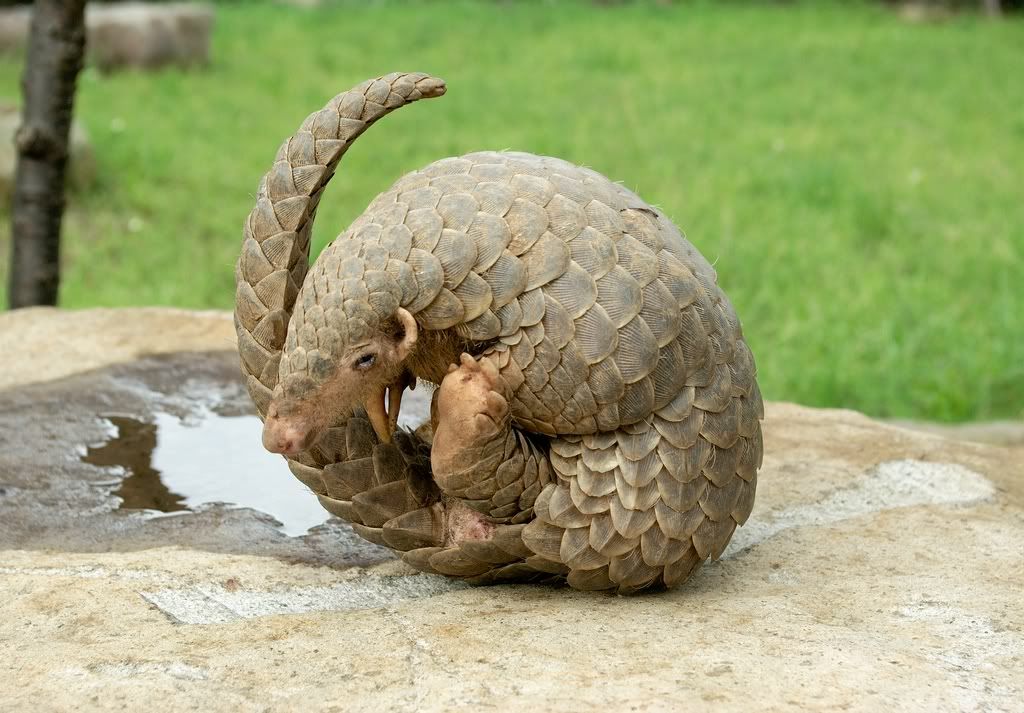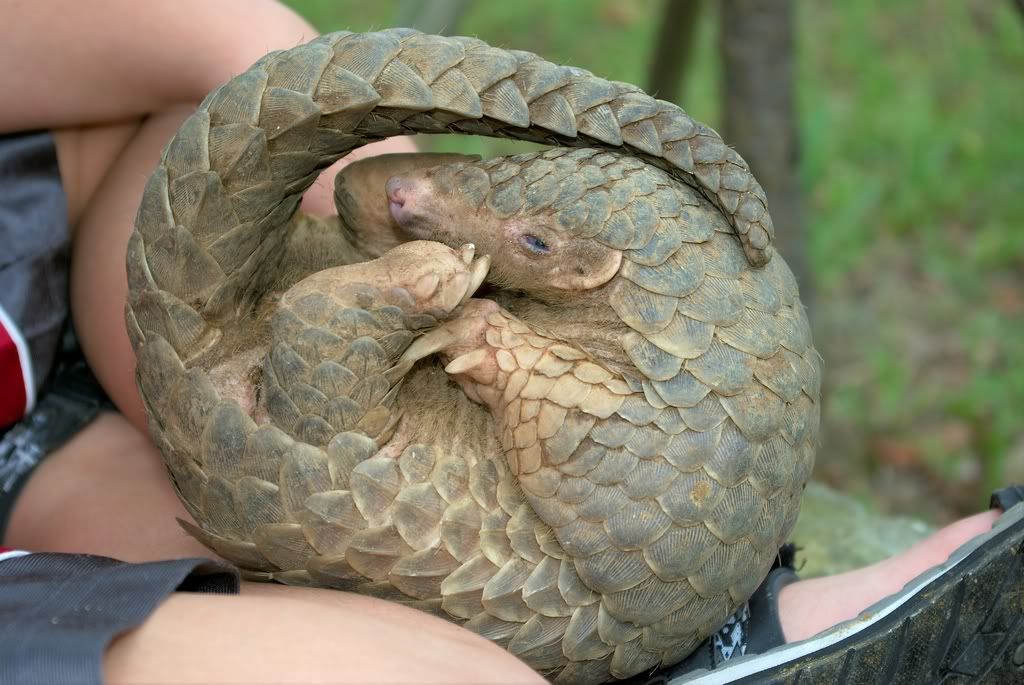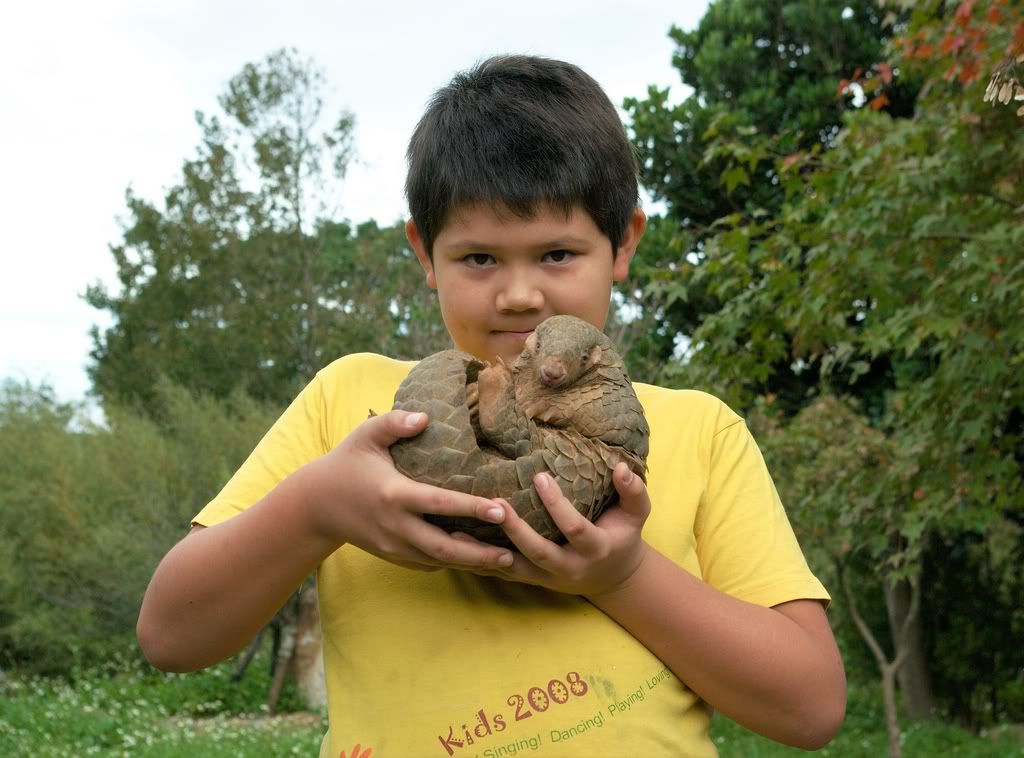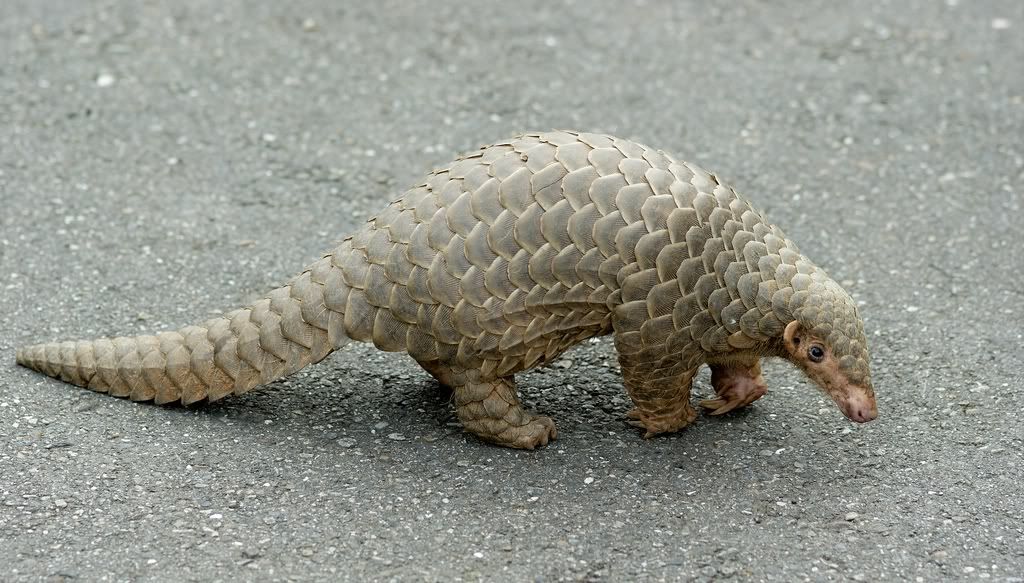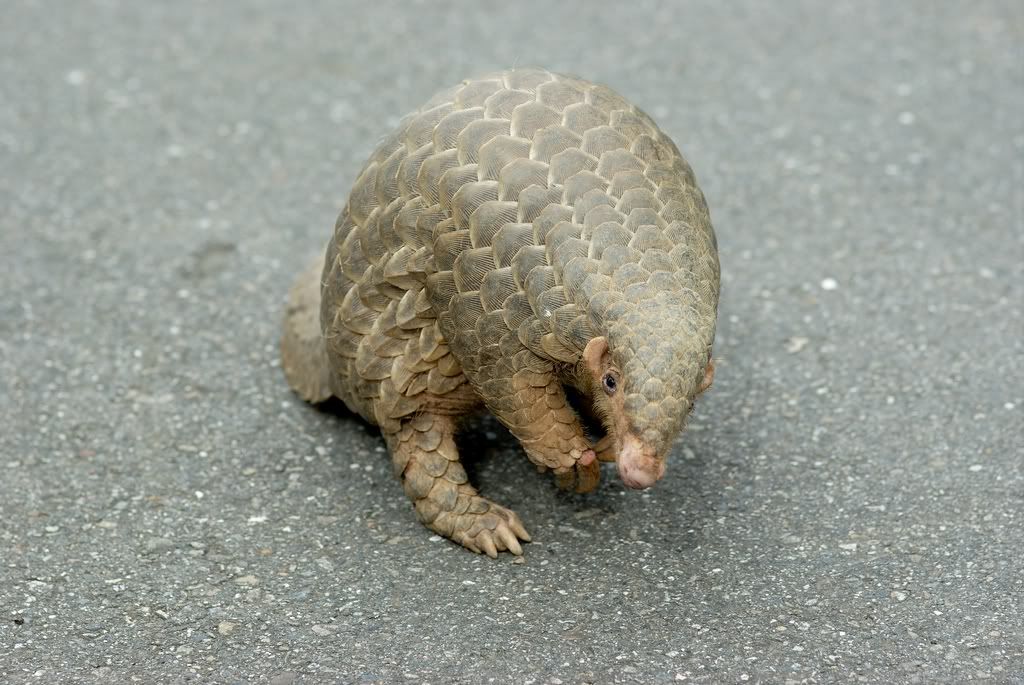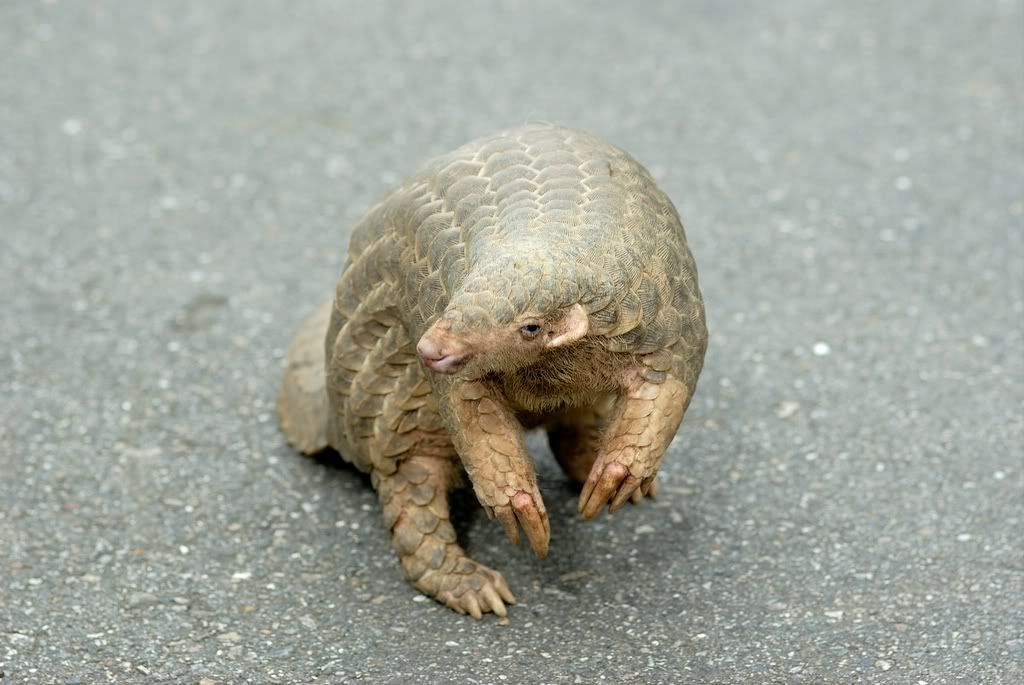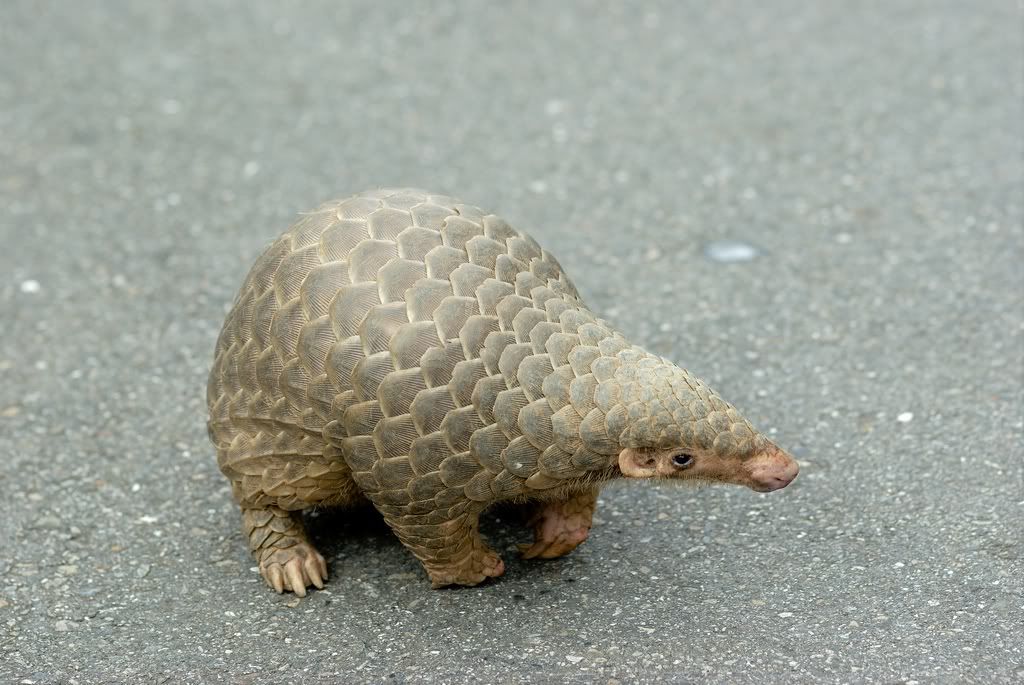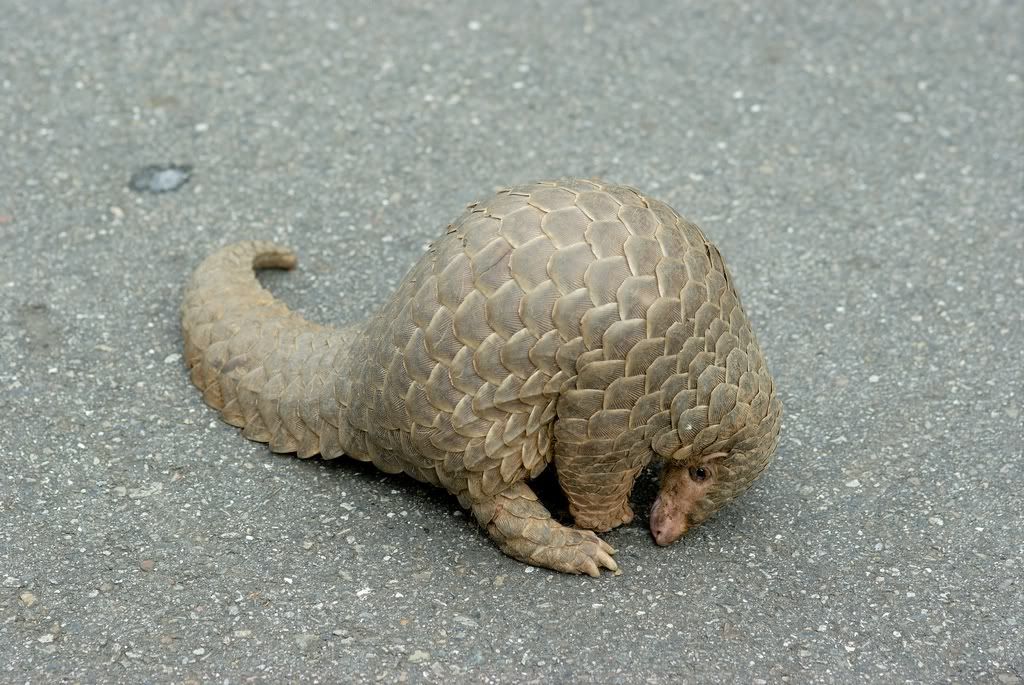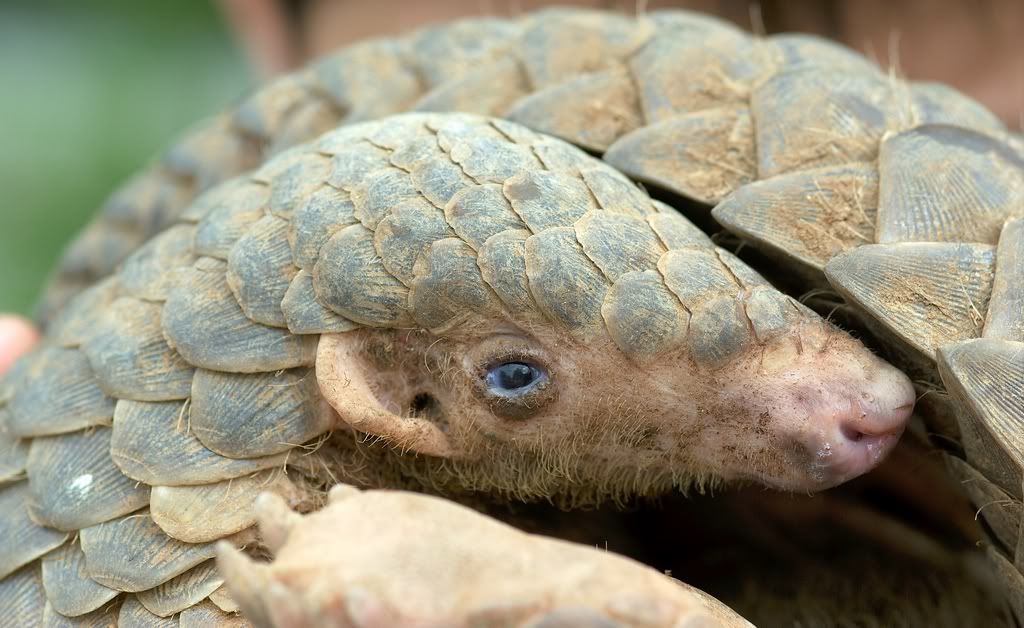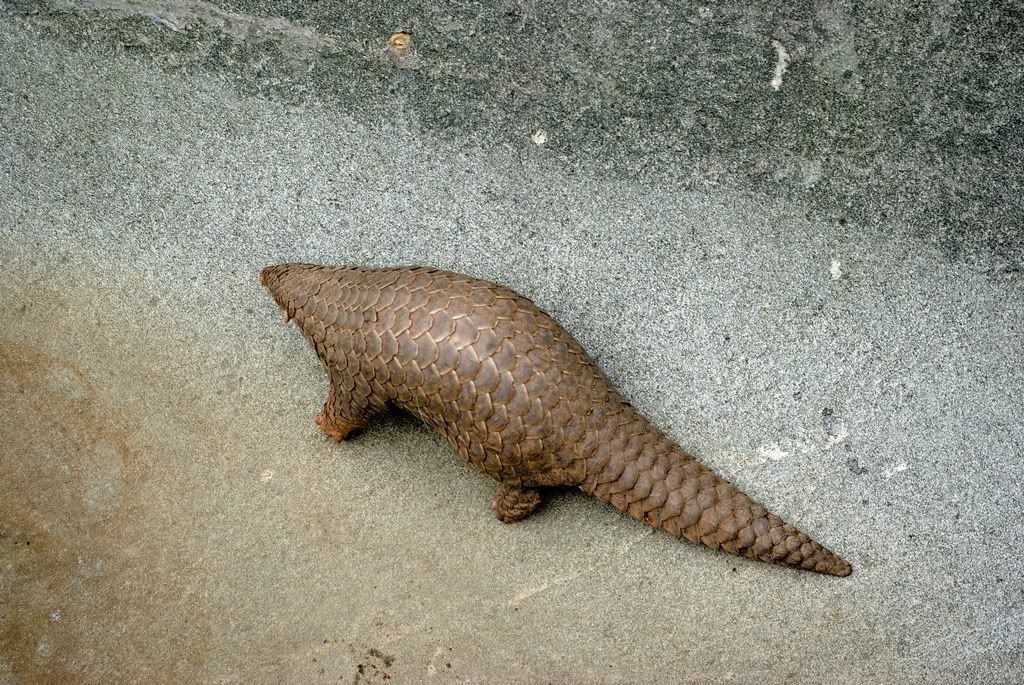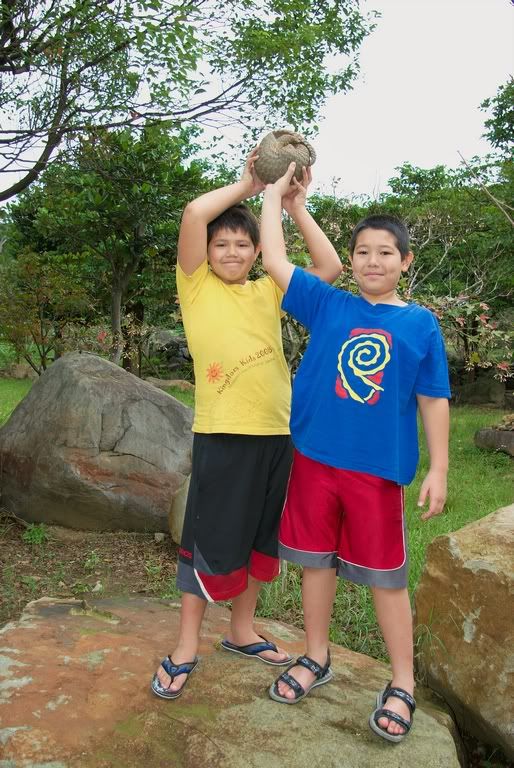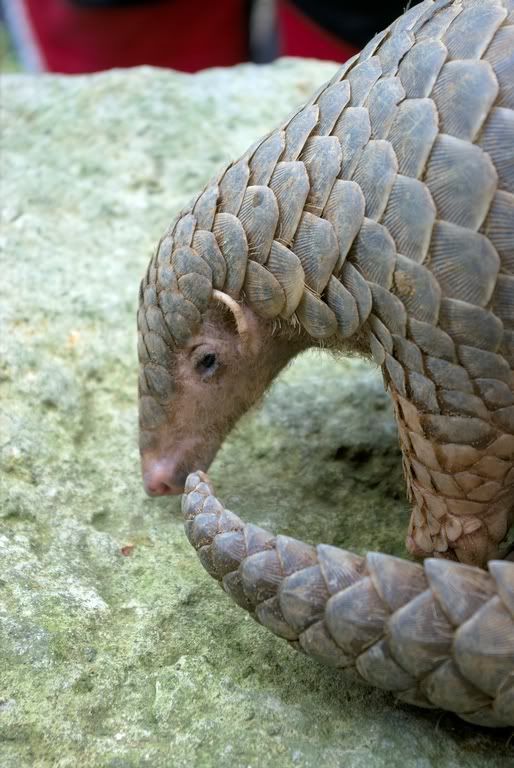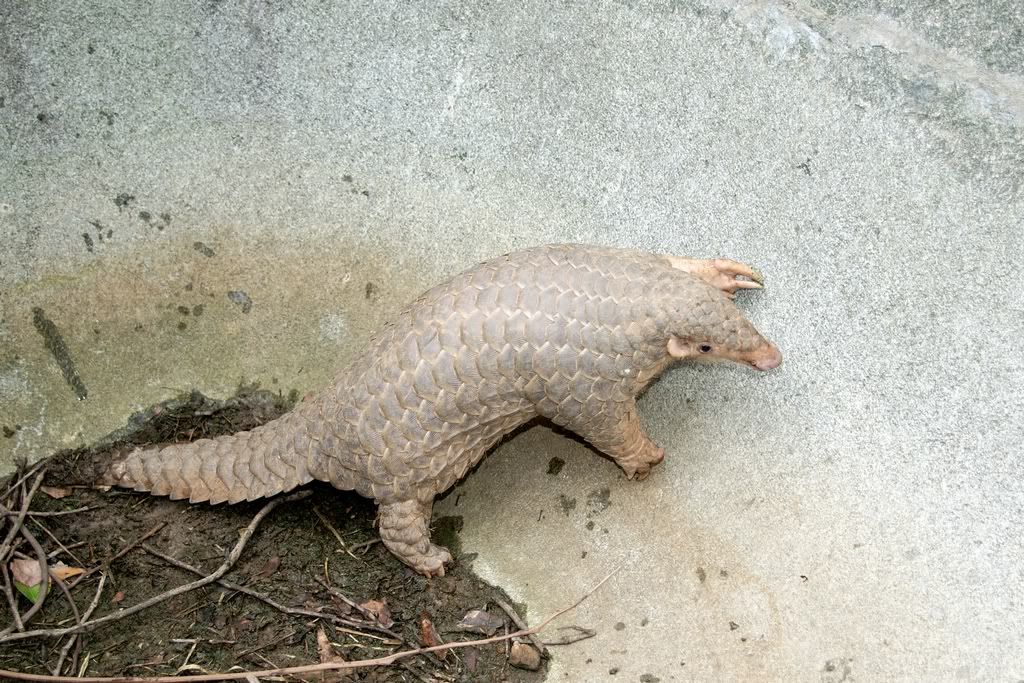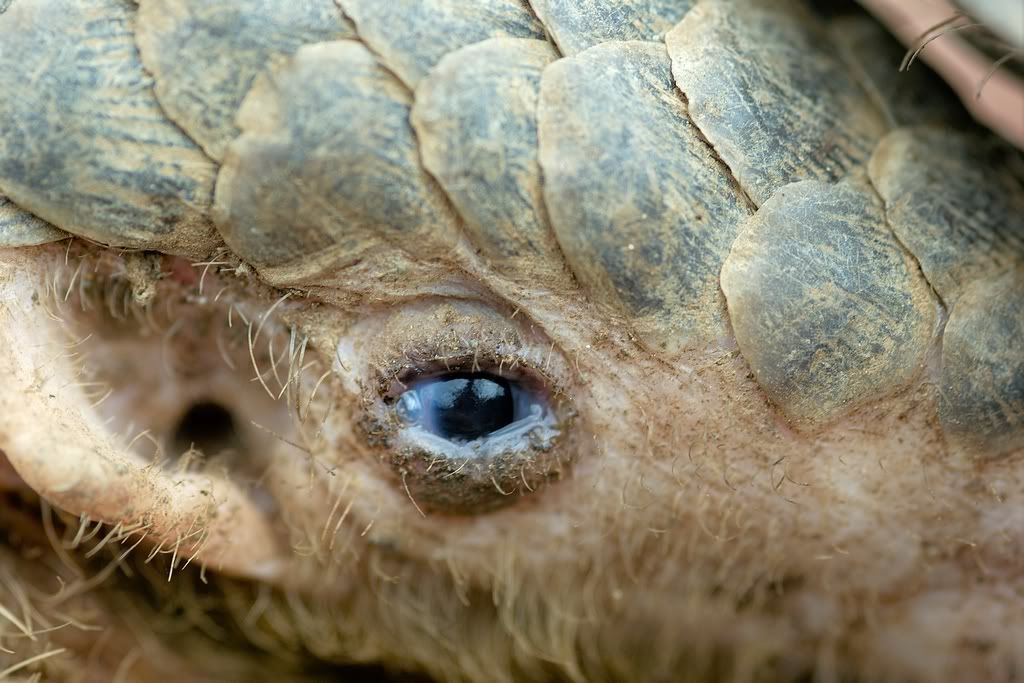I don’t think I’m too far off the truth when I presume that few of us have ever seen one of these in the wild, and until last Saturday night around 2030 hours, that included me.
I was lying in bed, reading Thomas E. Ricks’ “Fiasco - The American Military Adventure in Iraq”, when the phone rang downstairs in the living room. I heard one of the kids pick up, and half a minute later both boys erupted into joyous ululations, yelling up the stairs “DAAAAD! GET DRESSED AND COME DOWN, QUICK! THE NEIGHBORS CAUGHT A PANGOLIN AND WANT TO GIVE IT TO US!!”
It took me a while to extricate my brain from the sticky cobwebs in which all those complex politics and military operations in the Middle East had thoroughly shrouded it, and tried to recalibrate it for use on the matter at hand. A pangolin? Shyeeeaahh. Right. Spitting cobras fly out of my ass, and Martian storm troopers are bivouacking in my ghetto blaster. I was convinced I had misheard, and reckoned the neighbors were actually bringing over pomelos or home-made dumplings, as they often do, or maybe a present for Hans’ twelfth birthday today. But the inquiry I yelled back down the stairs while trying to pull on my britches without tripping over them still brought back the same message: the neighbors had found a pangolin, and did we want it, us being known snake catchers and all?
Wow. TRIPLE wow! You see, as crazy as I am about snakes, I’ll gladly trade three of my cobras for one of your pangolins any day of the week. I have night-walked Taiwan’s mountains extensively for two years and never ever seen a pangolin, not even a single scale. I managed to put on my shoes without strangling myself with the laces, and then my entire family accompanied me across the street to the neighbor’s yard. There on the ground stood a blue wire cage for dogs, containing not a poodle, but one of the oddest creatures I have ever had the pleasure to lay eyes on.
As a long-time resident of Taiwan, I actually knew quite a bit about Chinese pangolins and had seen countless pictures, but never the animal itself. Until 1990, when Manis p. pentadactyla was put under strict protection, the natives used to catch these animals to use their scales in Chinese medicine and their meat in Chinese cuisine. All pangolin species are reportedly very tasty; and the African pangolins are very popular bushmeat. The “Armor that Burrows Through The Mountain” (穿山甲), as the Chinese call the animal, still falls prey to poachers here in Taiwan, but nowadays Taiwanese pangolins don’t end up in local woks anymore, but are instead smuggled to Mainland China where they command top dollar.
Chinese pangolins spend their nights prowling lowland forests for ants and termites, and their days sleeping in self-dug underground burrows. Legend has it that they roll around in ant nests, trapping the insects under their movable armor scales. They then find a creek or pond, submerge and relax their scales. This forces the ants to the surface where the pangolin’s tongue laps them up. Wikipedia has more:
Pangolins have large keratin scales covering their skin and are the only mammals with this adaptation. They are found in tropical regions of Africa and Asia. The name “pangolin” derives from the Malay word pengguling (“something that rolls up”). Pangolins lack teeth and the ability to chew. Instead, they tear open anthills or termite mounds with their powerful front claws and probe deep into them with their very long tongues. Pangolins have glands in their chests to lubricate the tongue with sticky, ant-catching saliva.
In case you’re wondering where they put all that tongue - it retracts right down into the abdominal cavity, at or near the pelvis (no uncouth jokes, please.) Thanks to an anal gland similar to the model found in skunks, pangolins can give off a monstrously hideous stink, but this little guy, a rather young individual, just smelled of earth and dirt. Picking him up did not always cause him to roll up into a ball, whereas touching his surprisingly soft and hairy belly and palms did so without fail.
The main reason for my intense excitement at finally coming face to face with one of these “Old World Armadillos” (to which they’re actually not at all related) is not so much their rarity or their weirdly cute appearance, but their ancientness. This is a living fossil, an animal that has not changed one iota for at least 56 million years. Compounding the awesome sensation of observing a genetic witness to prehistory is the fact that all these deliciously freaky features - the scales, the tongue, the toothless mouth, the über-specialized lifestyle - have actually survived those endless eons without a single major mutation, while the rest of the planet’s fauna evolved into the furry hunters and grazers we commonly associate with the term “mammal”.
Apart from all that, pangolins are also bona fide archetypes of antediluvian adorability, i. e. terribly cute. The next morning we took the ant fiend out of the dog cage and brought it to a spacious private garden featuring a lawn and large decorative rocks which I planned to use for backgrounds. The pangolin is such a docile creature that we didn’t even bother with caging or bagging it for the short ride - the boys just held it on their laps, where it snored contentedly, snot dripping out of its little pink nose. At the garden I discovered that this docility does not readily translate into willingness to be photographed. As soon as we had placed the still bunched-up critter on the ground, it tentatively started to sniff and look around, and once we had stepped back about five feet, it unwrapped itself and took off across the lawn at quite an impressive clip. Photographing the creature in its rolled-out state seemed impossible, and the strategy of placing it on top of a large rock in the hope that it would not dare to jump off failed miserably: trusting his scales to dampen the impact, it ran straight for the edge, hurled itself off the precipice and hit the (fortunately muddy) ground tumbling, stumbling, and finally running. In the end, we discovered a large, artsy birdbath into which we lowered Pine Cone Boy. In the tub it immediately started to look for an exit, which afforded me a few shots of its active state, if only from above.
In the afternoon, we showed the primordial beast to Hans’ birthday guests. Ten awe-hushed sixth-graders standing in a circle around the animal created second thoughts about escape. However, the pangolin didn’t seem to want to curl up and sulk either; it only seems to do that if someone approaches within touching distance. So it just swung its neckless head here and there, walked around at a slow gait (on his knuckles, btw - how freaky is that?), and I finally got a few proper shots of it in motion.
That night, we released the little pineapple pinscher at a remote place in the mountains. He wasn’t well: dripping profusely from the nose, watery eyes, and since I can’t imagine any vet here knowing anything about these walking pine cones, we released him in the hope that he’ll dig himself a nice burrow and sleep through his cold before it gets worse.
I could have sold it for the equivalent of 500 US$ to a poacher in our village, but my wife vehemently opposed the idea. She claims the pangolin’s blue eyes and hind paws look almost human. Women…sheesh.
(wait for it…someone’s gonna fall for this…wait for it…)
Footnote: Further and very detailed reading on the status and natural history of Manis pentadactyla can be found here…
